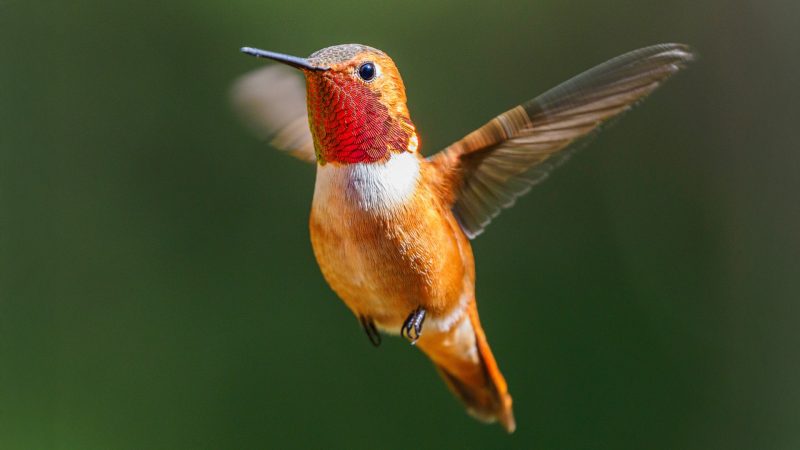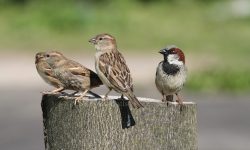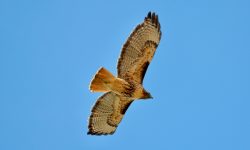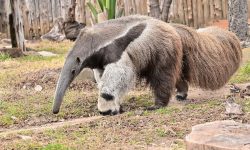Glinting like a jewel in midair, the Ruby-throated Hummingbird (Archilochus colubris) is the most widespread hummingbird species in eastern North America. With its dazzling iridescence, rapid wingbeats, and fearless demeanor, this tiny bird embodies the phrase “wings of fire.” Though small in size, the Ruby-throated Hummingbird plays an outsized role in pollination and captivates birdwatchers across its range. This article explores its identification, habitat, migration, diet, breeding behavior, and tips for spotting it in the wild.

Meet the Ruby-throated Hummingbird
A Jewel in Motion: Appearance and Size
Gleaming like a living gemstone, the male Ruby-throated Hummingbird is nature’s perfect blend of power and beauty. Its iconic ruby-red throat—called a gorget—bursts into fiery brilliance when caught in the sunlight, as if lit from within. Contrasting with this radiant display, its crown and back shimmer with a metallic emerald sheen, while the underparts glow a soft silvery white. Females, though lacking the ruby throat, boast the same dazzling green plumage and elegance. Despite their visual impact, these birds are incredibly tiny—just 3 to 3.5 inches long, with a wingspan of 4 inches and a weight lighter than a paperclip or a U.S. penny.
Masters of the Air: Flight Style and Speed
If ever there was a creature designed to defy gravity, it’s the Ruby-throated Hummingbird. With wings beating around 50 times per second, it hovers in midair like a miniature helicopter, emitting a high-pitched hum that hints at the speed beneath its delicate frame. Thanks to a remarkable ball-and-socket shoulder joint, this hummingbird can dart forward, zip backward, and even remain motionless in the air with surgical precision. Every movement is swift, controlled, and breathtaking—making it one of the most agile and acrobatic flyers in the animal kingdom.
Range and Habitat
From Forest Glades to Tropical Skies: Seasonal Distribution
The Ruby-throated Hummingbird is a true traveler of the Americas. Each spring, these glittering birds arrive across eastern North America, filling forests, gardens, and backyards from the Gulf Coast and Florida all the way to southern Canada. In fact, they hold the unique distinction of being the only hummingbird species that breeds east of the Mississippi River—a solitary spark of tropical color in temperate landscapes.
But as summer fades, so does their northern presence. Triggered by changing light and instinct, these tiny birds embark on an epic journey across the Gulf of Mexico—a nonstop, 500-mile flight that many larger birds wouldn’t dare attempt. Their destination: the warm, flower-rich regions of southern Mexico, Guatemala, and Honduras. Though mostly eastern in range, a few rare travelers may drift west during migration, offering fleeting glimpses in unexpected places.
Where They Feel at Home: Preferred Environments
Ruby-throated Hummingbirds are choosy when it comes to habitat, favoring places where beauty and biodiversity bloom. Open woodlands, forest edges, flowering gardens, and leafy suburban neighborhoods all serve as welcome havens. What truly draws them in are abundant blossoms and flowering trees, offering the nectar that fuels their fast-paced lives.
Backyard hummingbird feeders, especially those filled with clean sugar water, become vital refueling stations—sometimes turning an ordinary yard into a dazzling aerial theater. Whether weaving through a meadow or hovering near a porch, these birds are most at home in vibrant, flower-filled spaces where color and scent beckon them from above.
Diet and Feeding Behavior
Sipping Sweetness: Nectar and Flower Preferences
The Ruby-throated Hummingbird lives life in the fast lane—and nectar is the high-octane fuel that keeps it going. With a taste for sweetness and a body built for precision, this bird gravitates toward tubular, nectar-rich flowers like trumpet creeper, bee balm, jewelweed, and wild columbine. Its tongue is a marvel of evolution—long, forked, and fringed, it rapidly flicks in and out up to 13 times per second, drawing sugary nectar deep from the heart of blossoms.
These high-energy meals are more than a treat—they’re a necessity. The hummingbird’s metabolism is so fast that it must feed nearly constantly throughout the day. A few hours without food could mean the difference between life and death. As it darts from flower to flower, it also becomes a vital pollinator, transferring pollen on its tiny head and playing a silent role in the cycle of plant life.
Tiny Predator: Insect Hunting
But nectar alone isn’t enough. Behind those shimmering feathers lies a determined insect hunter. To meet its protein needs—especially during nesting season—the Ruby-throated Hummingbird hunts small insects and spiders with surprising agility. It may pluck aphids from leaves, snatch mosquitoes midair, or skim gnats from the surface of a pond.
This carnivorous streak is most crucial for females raising young, as the growing chicks require a protein-rich diet to develop strong muscles and feathers. With lightning-fast reflexes and eyes trained on motion, the hummingbird takes on its role as both flower visitor and aerial predator—one of the few creatures equally at home among petals and prey.
Courtship and Breeding
A Dance in the Sky: Mating Displays
When spring arrives, so does the Ruby-throated Hummingbird’s sky-high spectacle of love. Males transform into dazzling performers, launching into dramatic U-shaped courtship dives before watching females. As they streak through the air, their wings produce a loud, vibrating hum, and their fiery red throat flashes like a signal flare in the sunlight. Each arc is a calculated display of speed, agility, and color—designed to impress and attract.
But these breathtaking performances come with no strings attached. Once a female accepts the display and mating takes place, the male vanishes from the parenting picture. His role ends with the show; the rest is up to the female alone.
A Tiny Masterpiece: Nest Construction
In the quiet of the trees, the female sets to work on one of nature’s tiniest engineering marvels: a nest no larger than a walnut, perfectly camouflaged and delicately constructed. She uses plant down for softness, spider silk for flexibility, and bits of lichen and bark for disguise. Anchored securely on a slender branch—often 10 to 40 feet above ground—the nest is both sturdy and stretchable, expanding as her chicks grow.
Within this cradle, she lays two pea-sized, pearl-white eggs and begins the solitary job of incubation, warming them with her body for 12 to 14 days, shielded from predators and storms alike.
Devoted Motherhood: Raising the Young
Once the eggs hatch, the female becomes a tireless provider. The chicks, blind and featherless, rely entirely on her for warmth and nourishment. She crafts a high-protein slurry from tiny insects and nectar, returning again and again to feed her nestlings—sometimes visiting hundreds of flowers a day in her quest to keep them alive.
Over the next three weeks, the chicks rapidly transform from helpless hatchlings into fledgling flyers. Around day 18 to 22, they take their first tentative leap into the air, leaving the nest behind. From that point on, they must navigate the world on their own—tiny sparks of life now ready to burn bright in the sky.
Migration Marvel: Crossing the Gulf
Twice a year, the Ruby-throated Hummingbird undertakes a journey so bold it borders on the unbelievable. With wings that weigh less than a coin and a body smaller than your thumb, this tiny bird launches itself into open sky and begins a nonstop flight across the Gulf of Mexico—a vast expanse of water stretching 500 to 600 miles between the U.S. coast and Central America.
There are no islands, no resting points, no second chances. The flight can last 18 to 24 hours without pause, powered entirely by fat reserves the bird has carefully built up in the weeks before departure. At its heaviest, the Ruby-throated Hummingbird may double its body weight, turning into a compact, flying energy reserve.
How does such a small creature navigate this high-risk crossing? Scientists believe it uses a sophisticated blend of instinct, memory, magnetic fields, and even the stars to chart its path. Some studies suggest these birds can detect Earth’s magnetic field through specialized light receptors in their eyes—a built-in compass that guides them across oceans and continents.
It’s a migration that defies logic, yet it happens every year—a fiery-winged miracle that speaks to the determination and precision of one of North America’s smallest yet most extraordinary travelers.
When and Where to Spot Them
Seasons of Spark: Peak Activity
If you’re hoping to catch a glimpse of a Ruby-throated Hummingbird in the wild, timing is everything. These feathered jewels begin their annual return to the southern U.S. as early as March, with the migration wave gradually sweeping northward. By May, they’re dazzling gardens and woodlands all the way up to southern Canada.
Their numbers swell through June and July, when males defend feeding territories and females tend to nests. This is prime hummingbird-watching season—a time when they’re most visible, most vocal, and most fearless.
As summer wanes, a quiet urgency sets in. By August, the birds begin their southbound migration, fueling up for their incredible journey across the Gulf. In some places, especially along southern flyways, you can still spot them into October, zipping from flower to flower with purpose.
Where the Wings Catch Light: Ideal Birding Locations
Ruby-throated Hummingbirds favor vibrant, blooming landscapes, and the best places to see them mirror the energy they bring. Look for them hovering like tiny helicopters over nectar-rich gardens, darting through meadow clearings, or patrolling woodland edges where wildflowers thrive.
Nature lovers can also find them in wildlife refuges, national parks, and suburban backyards—anywhere that offers a reliable source of nectar. Hummingbird feeders, kept clean and filled with sugar water (four parts water to one part sugar), can transform an ordinary yard into a hummingbird haven.
Some of the top spots for sightings include:
-
The Appalachian Mountains, where wild columbine and jewelweed bloom along shaded trails
-
The Great Smoky Mountains National Park, a haven of biodiversity that attracts migrants and breeders alike
-
The Gulf Coast states, especially during spring and fall migrations, when hummingbirds pass through in impressive numbers
Whether you’re hiking a forest trail or sipping coffee on your porch, the flash of green and red from a Ruby-throated Hummingbird is a sign that nature’s tiniest traveler is near.
Conservation and Threats
Holding Steady—For Now: Current Status
For the moment, the Ruby-throated Hummingbird is thriving. Classified as Least Concern by the IUCN, this tiny traveler continues to sparkle across backyards, forests, and meadows from Florida to Ontario. Its population remains stable, and its wide breeding range offers a buffer against localized changes.
But even resilient wings can falter under growing pressures. Scientists and bird conservationists continue to watch population trends closely, knowing that the challenges of a rapidly changing world could tip the balance in the years to come.
Silent Struggles: Challenges They Face
Despite their apparent abundance, Ruby-throated Hummingbirds are not immune to the forces reshaping our planet. Habitat loss, especially from deforestation and urban sprawl, chips away at the flowering corridors they rely on for food and nesting. As natural landscapes give way to concrete and lawn, nectar-rich plants disappear—and with them, the lifeblood of the hummingbird’s world.
Climate change poses an even subtler threat. Warmer temperatures and altered rainfall patterns can shift blooming seasons, causing flowers to peak before or after the birds arrive. A mistimed migration may mean fewer resources, just when energy is most needed.
Then there’s the invisible killer: pesticides. Many insecticides, especially neonicotinoids, reduce or contaminate the tiny insects these birds depend on for protein. Even nectar sources can become tainted, impacting health and reproductive success.
What You Can Do: Guardians of the Garden
The good news? Helping hummingbirds doesn’t require a wilderness. Every yard, garden, and balcony can become a sanctuary. By planting native flowering species—like bee balm, cardinal flower, or trumpet vine—you offer vital nectar during the breeding and migration seasons. Keep hummingbird feeders clean and filled with fresh, homemade sugar water (never dyed red), and avoid chemical pesticides that harm both insects and birds.
Even small changes matter. In a world where wildness is shrinking, a single patch of color and sweetness might be the lifeline that keeps a hummingbird’s wings in motion.
Fascinating Facts
-
Despite their small size, Ruby-throated Hummingbirds can defend territory aggressively, often chasing away other birds.
-
Their heart beats up to 1,260 times per minute in flight.
-
They enter torpor—a hibernation-like state—at night to conserve energy.
-
Their wings rotate in a full circle, enabling hovering, which no other birds can do quite as efficiently.
-
The oldest known Ruby-throated Hummingbird lived over 9 years.
Conclusion: Nature’s Fiery Jewel
From their shimmering feathers to their fearless attitude and epic migrations, Ruby-throated Hummingbirds embody nature’s brilliance on a miniature scale. Watching one hover over a blossom or zip through the air is a moment of pure wonder. Whether you’re a backyard birder or a nature trail explorer, this “winged flame” is a bird worth seeking. With mindful planting and conservation, we can ensure these dazzling pollinators continue to spark joy across the skies of North America.






